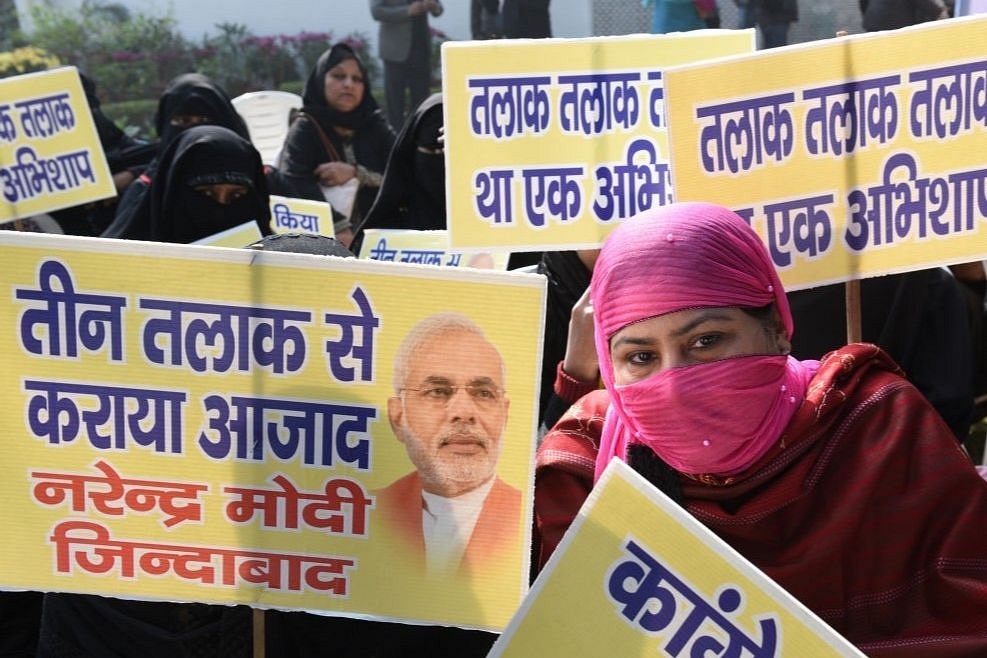Insta
Delhi: 38-Year-Old Man First To Be Arrested On Charges Of Giving Triple Talaq To Wife

Muslim women at an event to celebrate the passing of the triple talaq bill by the Lok Sabha in New Delhi earlier. (Representative Image) (Arvind Yadav/Hindustan Times via GettyImages)
The Delhi police arrested a 38-year-old man in North Delhi’s Azad Market area on Friday (10 August) for allegedly giving triple talaq to his wife. As per the police, it is the first case in the national capital of a man being arrested over the triple talaq, reports The Indian Express.
According to the report, a 30-year-old woman complained to the police that her husband gave her triple talaq on 23 June. The woman, in her complaint, alleged that she had to leave her husband's home with her six-year-old son on the same day.
The police registered a case under the Muslim Women (Protection of Rights of Marriage) Act 2019 at the Bara Hindu Rao police station in North Delhi's Azad Market area.
The Muslim Women (Protection of Rights of Marriage) Act, 2019 which criminalizes instant triple talaq was passed by the Parliament in the just-concluded Budget session and became a law after being signed by President Ram Nath Kovind.
“The woman registered a complaint at Bara Hindu Rao police station Friday. She alleged that her husband pronounced ‘talaq’ three times and later issued a ‘fatwa’ against her over WhatsApp, mentioning that he had given her talaq. We arrested the man from his residence in Azad Market at night. The woman told us the couple married in 2011,” said Nupur Prasad, Deputy Commissioner of Police (DCP) North Delhi.
However, a Delhi court granted bail to the accused on the ground that there was no apprehension that he would escape.
Introducing ElectionsHQ + 50 Ground Reports Project
The 2024 elections might seem easy to guess, but there are some important questions that shouldn't be missed.
Do freebies still sway voters? Do people prioritise infrastructure when voting? How will Punjab vote?
The answers to these questions provide great insights into where we, as a country, are headed in the years to come.
Swarajya is starting a project with an aim to do 50 solid ground stories and a smart commentary service on WhatsApp, a one-of-a-kind. We'd love your support during this election season.
Click below to contribute.
Latest